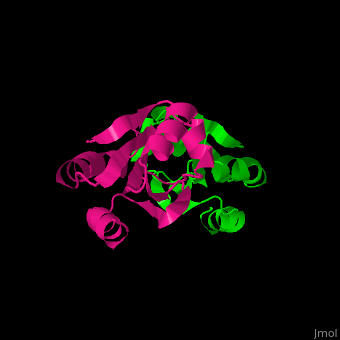Function
Thioredoxin (Trx) is an enzyme which facilitates, in its reduced form, the reduction of proteins by cysteine thiol-disulfide exchange[1]. They contain a CXXC motif.
- Trx-1 is a mammalian cellular protein.
- Trx-2 is mitochondria-specific.
- Trx C,M,X,Y are found in prokaryotes.
- Trx F,H,O are found in eukaryotes.
There are a range of strategies used by the host organism in an attempt to defend itself against pathogen invasion. Among these is the release of oxidants, such as reactive oxygen species (ROS), which at defined physiological concentrations act as signaling messengers. However, in supraphysiological concentrations, their reactivity has deleterious cellular consequences, causing damage to macromolecules such as proteins, lipids and DNA, thus impairing the system's homeostasis (SIES, 1985). It is therefore an alternative used to inhibit the pathogen and prevent infection of the organism.
Relevance
Serum Trx level is a predictor of steatohepatitis[2].
Disease
Trx is involved in a wide range of human diseases and conditions including cancer, viral diseases, aging, cardiac conditions and more[3].
Structural highlights
The is involved in the reduction of disulfide bonds in proteins[4]
3D Structures of Thioredoxin
Thioredoxin 3D structures

